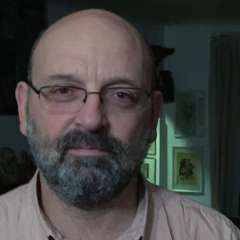Following Music Director Jaap van Zweden’s unexpected announcement that the 2023-24 season will be his last at the helm of the New York Philharmonic, the performances included in the ensemble’s second subscription week acquired new significance. One certainly felt the urge to start assessing the pluses and the minuses of a tenure only started in 2018.
On the positive side, van Zweden’s dedication to promoting contemporary composers and to constantly bringing their work in front of a generally conservative public is certainly commendable. He continued this trend on Thursday night, beginning his programme with the New York premiere of Hannah Kendall’s Kanashibari, a brief composition depicting – as the composer herself explained – “an episode of sleep paralysis... when the brain essentially awakes before the body”. The Philharmonic interpreted with assuredness a score employing a smaller orchestral formation (just four cellos, two double basses) generating a soundscape better suited for the ensemble’s temporary location in Lincoln Center’s Rose Theatre than for its home base, the cavernous David Geffen Hall (now being renovated). One doesn’t need a fancy title (Kanashibari denotes sleep paralysis in Japanese) or a storyboard to appreciate Kendall’s beautifully orchestrated suggestions of sleep and calm, quickly perturbed by images of phantasmal objects randomly moving around and an overall sensation of helplessness and anguish. The colorful and nervous world she imagines (with its John Adams reminiscences) is easily captivating and the New York Philharmonic would do great to schedule her newer scores for future seasons.
Under van Zweden’s baton, readings of the standard repertoire have often proven correct, but unimaginative. Fresh perspectives on works the public knows and loves have been rare. This perception held true for the orchestra's rendition of Beethoven’s Piano Concerto no. 3 in C minor, especially when comparing the ensemble’s output with Yefim Bronfman’s varied approach to the solo part. Even if the concerto is one of his favourites and he has played it numerous times, he was still able to convey a sense of discovery and spontaneity. His ability to mix powerful and graceful statements was as amazing as ever, as was his attention to details (“Silences have more tension than the notes themselves” was his comment in a short promotional video). Bronfman’s interpretation of the Largo (including his accompaniment to the woodwinds) was fluid and subtle, foretelling his rendering of Chopin’s Nocturne in D flat major as an encore. Constrained by an inflexible downbeat in the first movement, the interplay between piano and orchestra was more spontaneous in the unruffled Finale.
Luckily, due to the need for shorter symphonies for intermissionless performances, Haydn’s late gems seem to feature more often nowadays. With works played in reverse chronological order, the New York Philharmonic’s concert culminated with Haydn’s Symphony no. 92 in G major “Oxford”, a transformative work placed between the “Paris” and “London” cycles in the composer’s canon. The orchestra hadn’t played it for decades before playing it at the Bravo! Vail Music Festival earlier this summer. With his always precise gestures, van Zweden drew attention to the many thematic transformations, to the uncertain, syncopation-riddled rhythmic patterns in the Trio and to the good humour permeating the entire score. The lyrical quality of the minor central section of the Adagio cantabile was less obvious. If coordination between players was never in doubt, the orchestra seemed to adapt better in the Haydn to the intricacies of the not-very-friendly-for-large-ensembles Rose Theater. It was only their first performance here in this odd Philharmonic season and the musicians definitely need more time.


